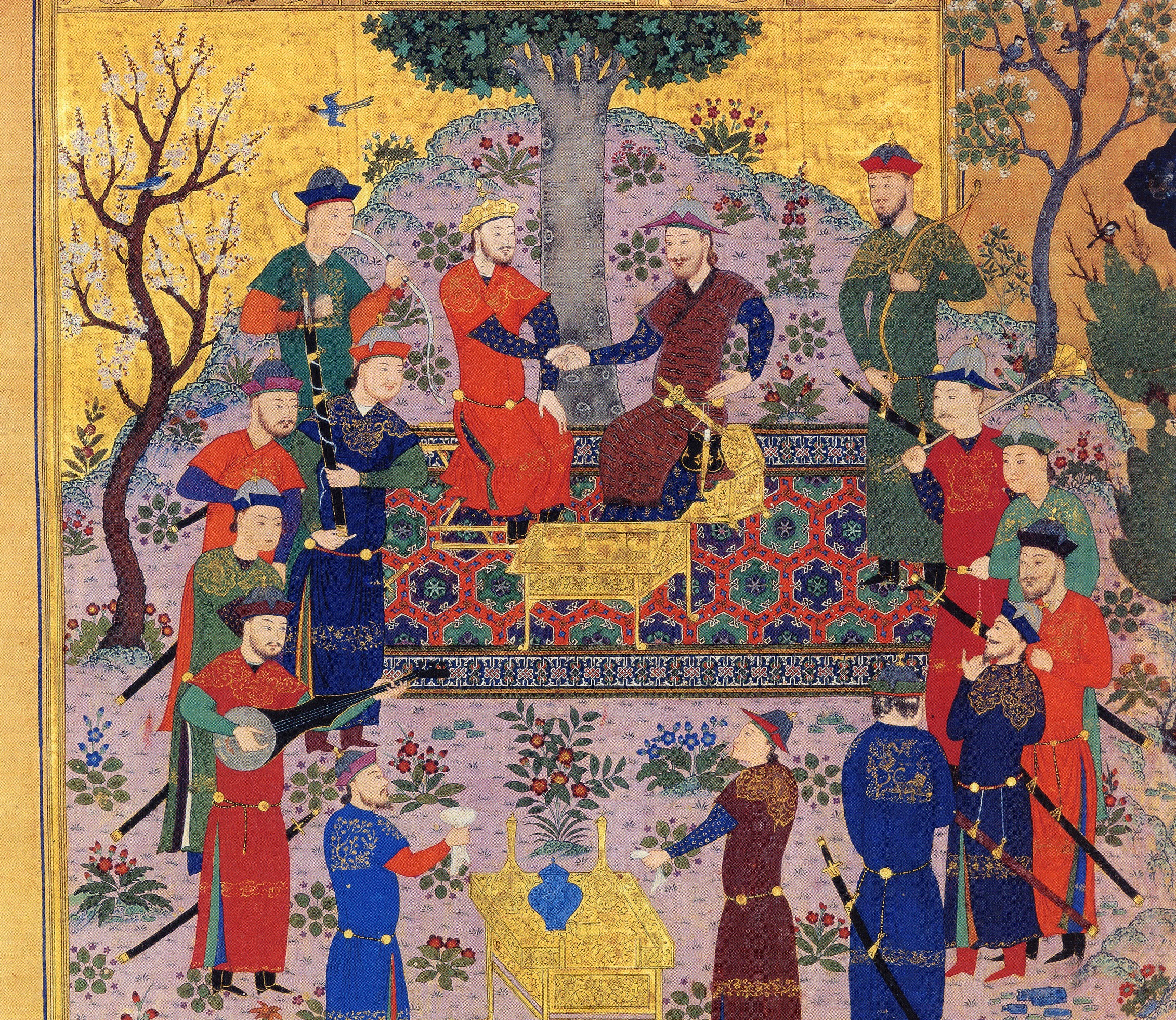
Every year Nowruz, the Persian New Year, falls on the spring equinox and is considered a celebration of victory over darkness, good over evil, and joy over sadness. The festivities last multiple days and include spring cleaning, fresh flowers, new garments, prayer, dancing, and spending time with family and in nature. Of course, in classic Persian-style, it would not be a celebration without a feast and a sofreh.
In every culture, there are a handful of words that are untranslatable. These words often provide deeper insight into the long-lasting values and traditions of a people. “Sofreh” is one of these words. It refers to the iconic Persian fabric, or tablecloth, that serves as the backdrop for seasonal feasts and celebrations. Over time, the term itself has taken on a larger cultural significance. It refers to a gathering, a sharing, and a place of togetherness for family and friends.
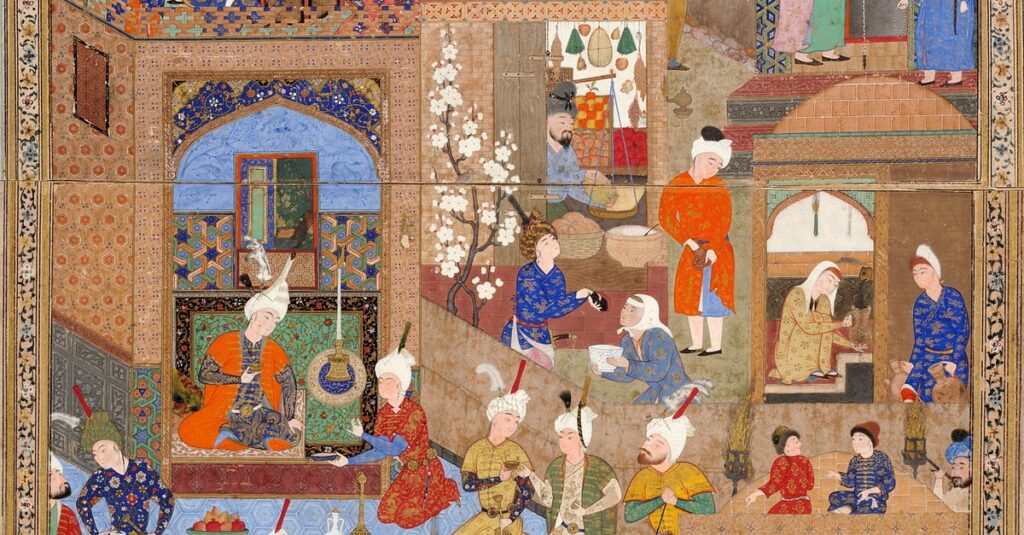
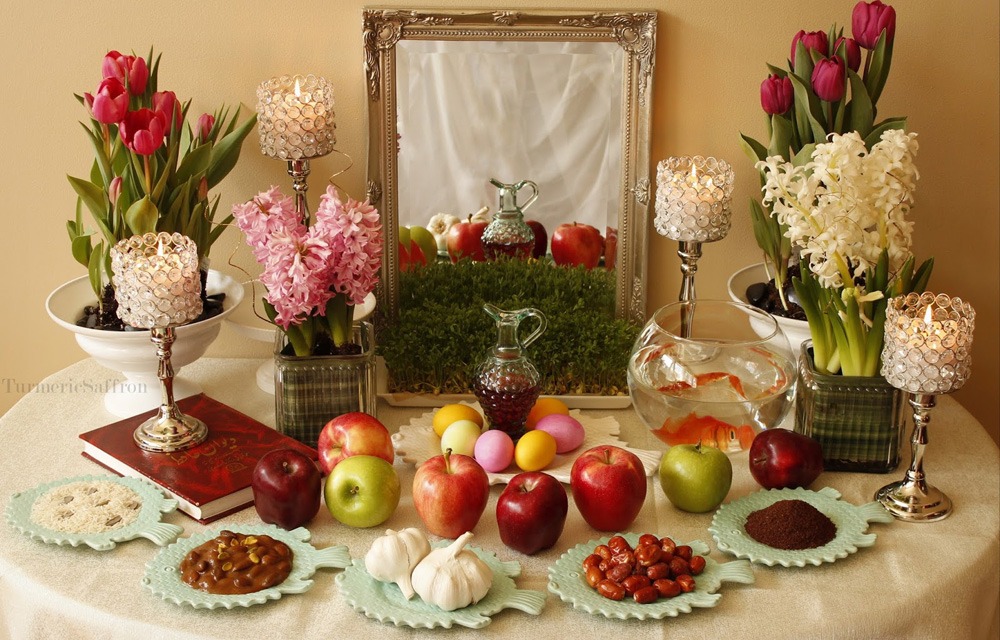
There are different types of sofreh used throughout the year, depending on the occasion. For the new year, many Persian families will spend time assembling a sofreh haft-seen. Haft-seen means “seven S’s,” and the essentials on the table are symbolic of self-reflection, enlightenment, wisdom, fertility, and life. Some of the key items are:
Sabzeh, wheatgrass – symbolizing rejuvenation and new life
Sonbol, hyacinths – symbolizing spring
Seeb, red apples – symbolizing beauty
Seer, bulb of garlic – symbolizing health
Sekkeh, coins – symbolizing prosperity
Somagh, sumac – symbolizing the sunrise
Senjed, fruit of the olive tree – symbolizing love
Samanoo, a sweet pudding – symbolizing strength
Serkeh, vinegar – symbolizing age and patience
Along with these S objects, families may choose to include mirrors, candles, goldfish, sweet treats, and books of wisdom, such as poetry or religious texts. These symbolic items hold power and rest upon an oftentimes hand-woven textile. This honors their presence both in the present moment, as well as in the history of the family that has gathered the items and assembled the haft-seen.
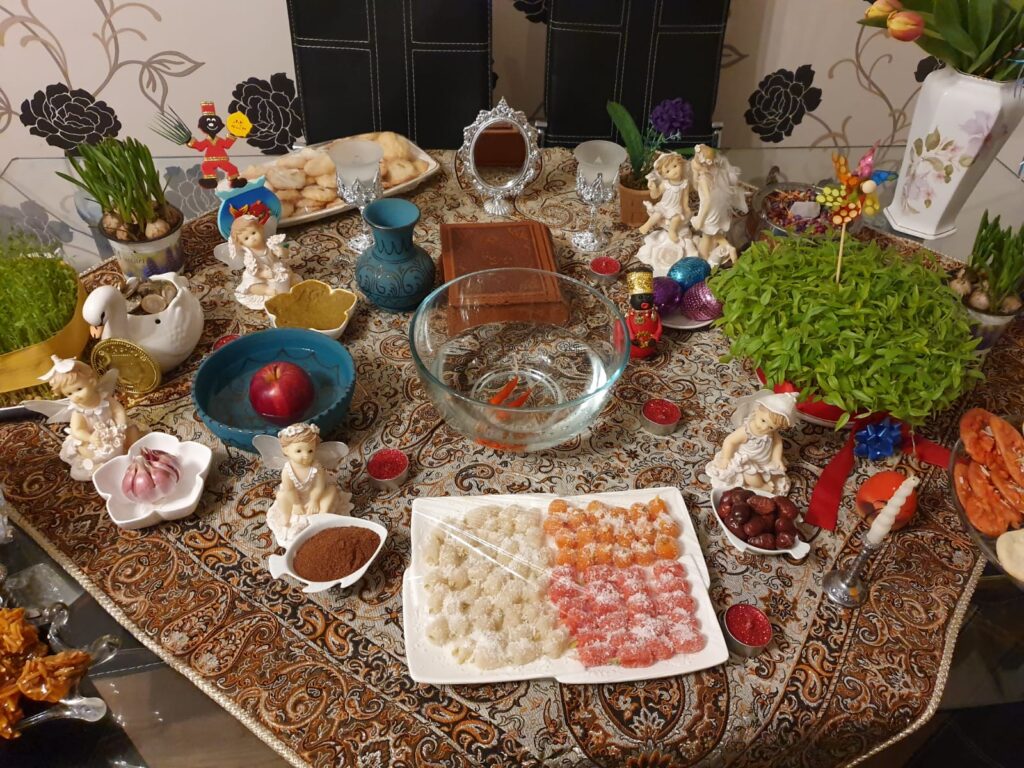
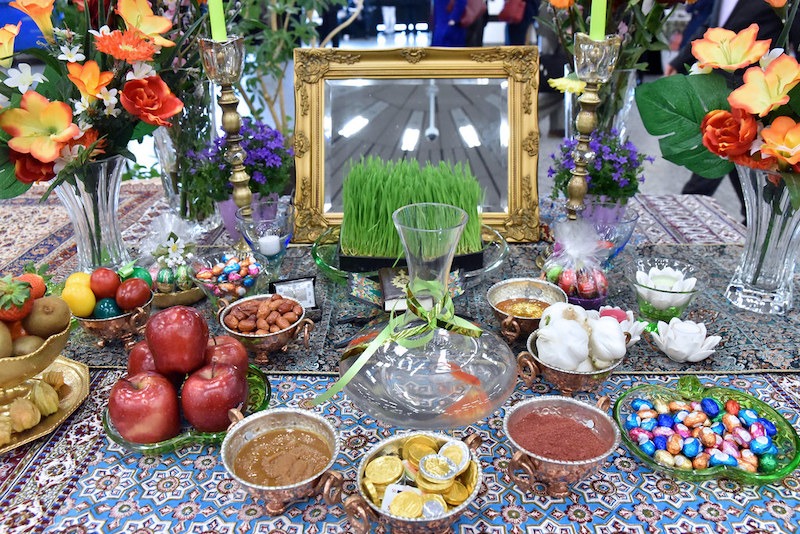
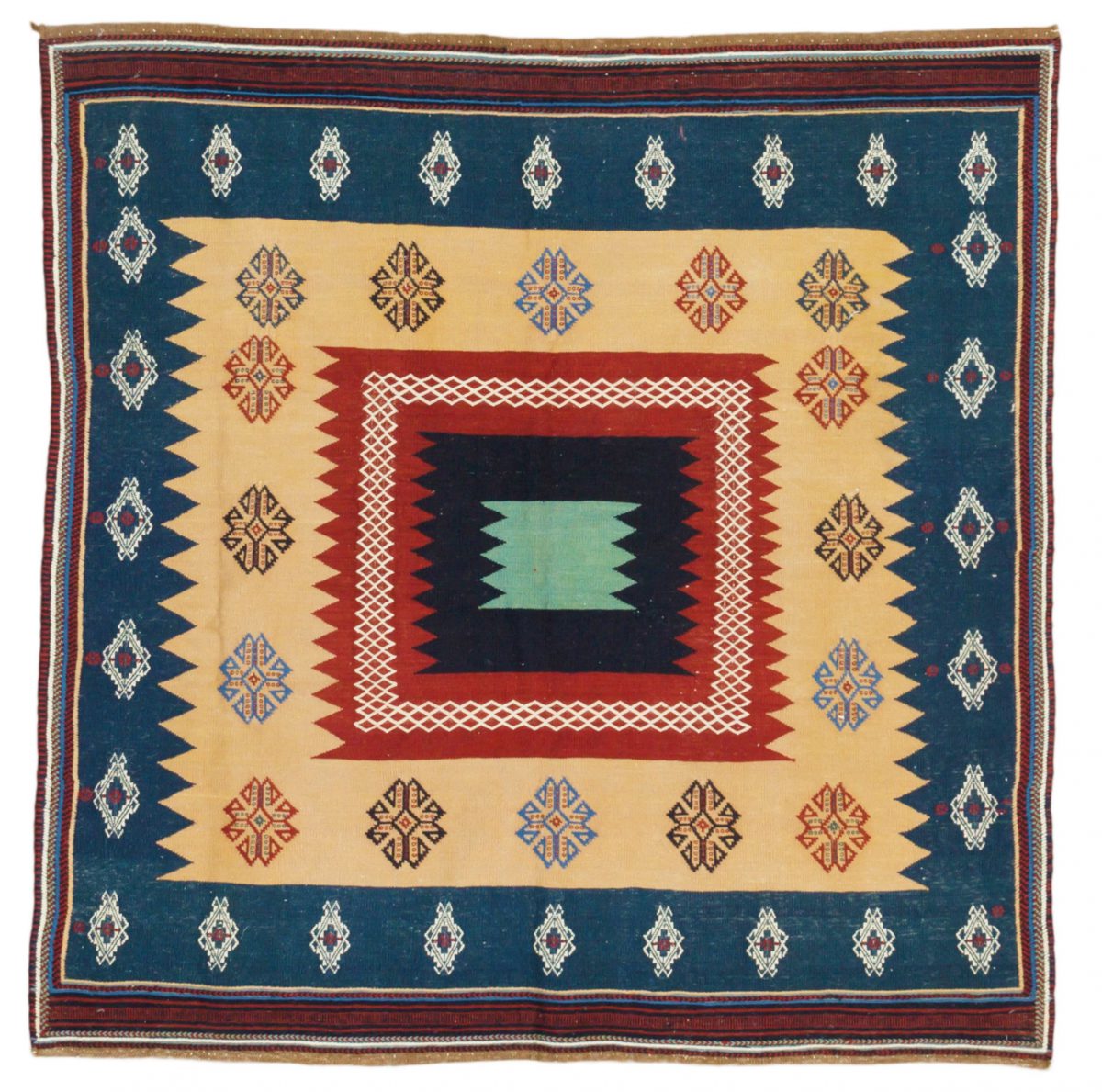
In Bread and Salt by Parviz Tanavoli, which you can find in the Tatter library, Tanavoli dives deeply into the tribal roots of the woven sofreh in Iran. It provides the reader with a deeper understanding of the historical background and the geographic context of Iranian tribes, complemented by images of sofreh from various regions across the country. Throughout the book, there is an appreciation for the diversity of weaving techniques, motifs and their origins. Tanavoli notes that, along with acting as an indication of tribal identity, sofreh have historically signaled family size, prosperity, and social status amongst the upper class.
As a child, growing up with dual cultural and ethnic identities could be confusing. Two parents, two countries, two languages, and even two New Years celebrations. For the longest time, I kept Nowruz to myself. With few peers who knew of the holiday or its meaning, I found it easiest to keep these traditions within the privacy of family. As I have grown into my Persian entity, I have embraced the opportunity to reflect on community and newness twice a year. I have found that many people, regardless of cultural identity, are excited by the opportunity to gather to celebrate victory over darkness as we welcome the sight of the earliest buds on trees, the return of birdsong outside of our windows, and the gift of more hours with the sun. Nowruz is for us all.
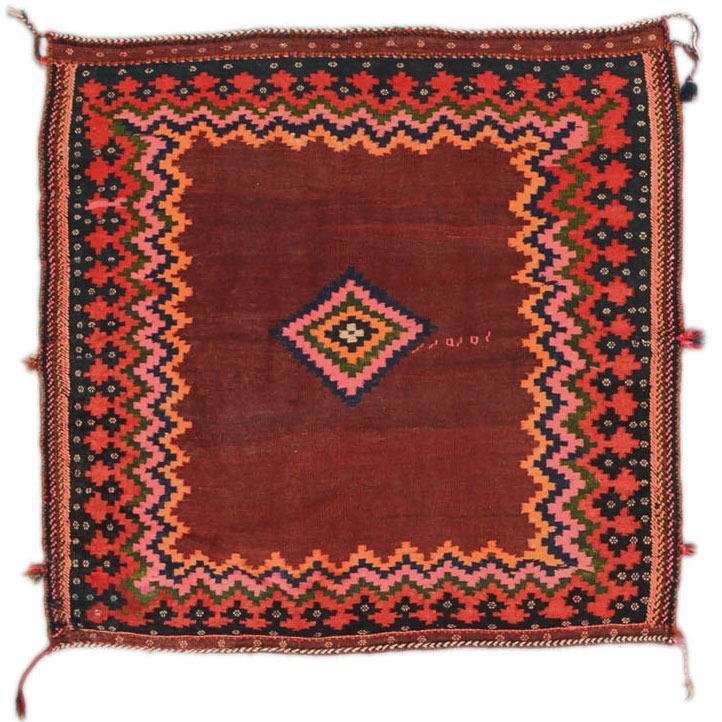
FURTHER READING AT TATTER
Persian Flatweaves: A Survey of Flatwoven Floor Covers and Hangings and Royal Masnads by Parviz Tanavoli, call number NK2809.P4.T32
Bread and Salt : Iranian Tribal Spreads and Salt Bags by Parviz Tanavoli and Shirin Samii, call number NK2809.P4.T28
